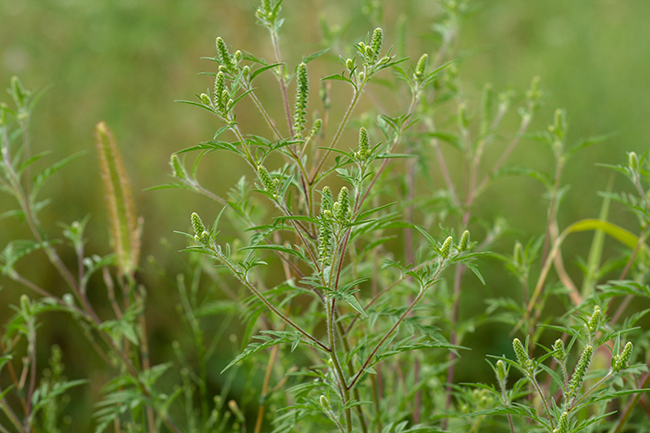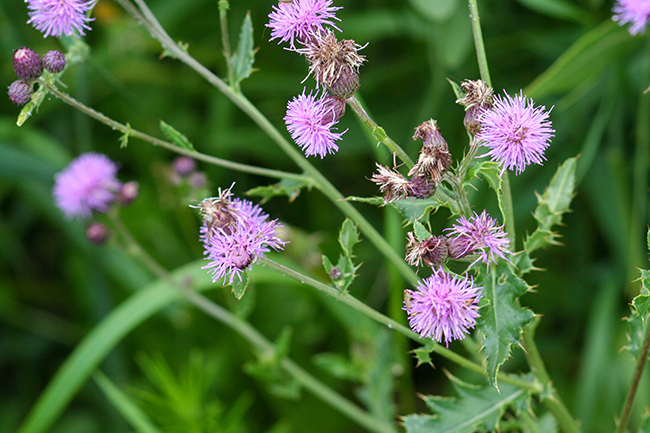Weed Life Cycles and Control Strategies
Table of Contents
Annual Weeds

Annual weeds have a one-year life cycle. They germinate, grow, flower, set seeds, and die in one year or less. They spread only by seed. Common roadside annuals include common ragweed and giant ragweed.
Controlling Annual Weeds
- Mow before the weeds set their seeds.
- Eliminate bare soil and disturbances to vegetation.
Biennial Weeds
Biennial weeds have a two-year life cycle. In the first year, a basal rosette (circular cluster of leaves on or near the ground) is produced. A central flowering stalk elongates in the second year, and the plant dies after seed maturation. Biennials spread only by seed. Common roadside biennials include musk thistle, bull thistle, poison hemlock, wild parsnip, and wild carrot.
Controlling Biennial Weeds
- Mow before the weeds set their seeds for five consecutive years.
- Treat basal rosette plants with herbicides in fall or early spring when results are typically best before their stalks have elongated (at which point they become more tolerant of herbicides) and damage to desirable plants can be minimized.
- Establish native vegetation to deprive biennials of sunlight during their weak seedling stage.
Perennial Weeds

The lifespan of perennial weeds can vary from a few years to many years. Some perennials spread only by seed, while others spread by seed and a variety of underground reproductive structures. Because of their extensive root systems, controlling such perennials may be very difficult.
Controlling Perennial Weeds
- Treat perennials with herbicides.
- Mow to prevent seed maturation and extend the herbicide treatment window.
- Establish a diverse native plant community.


